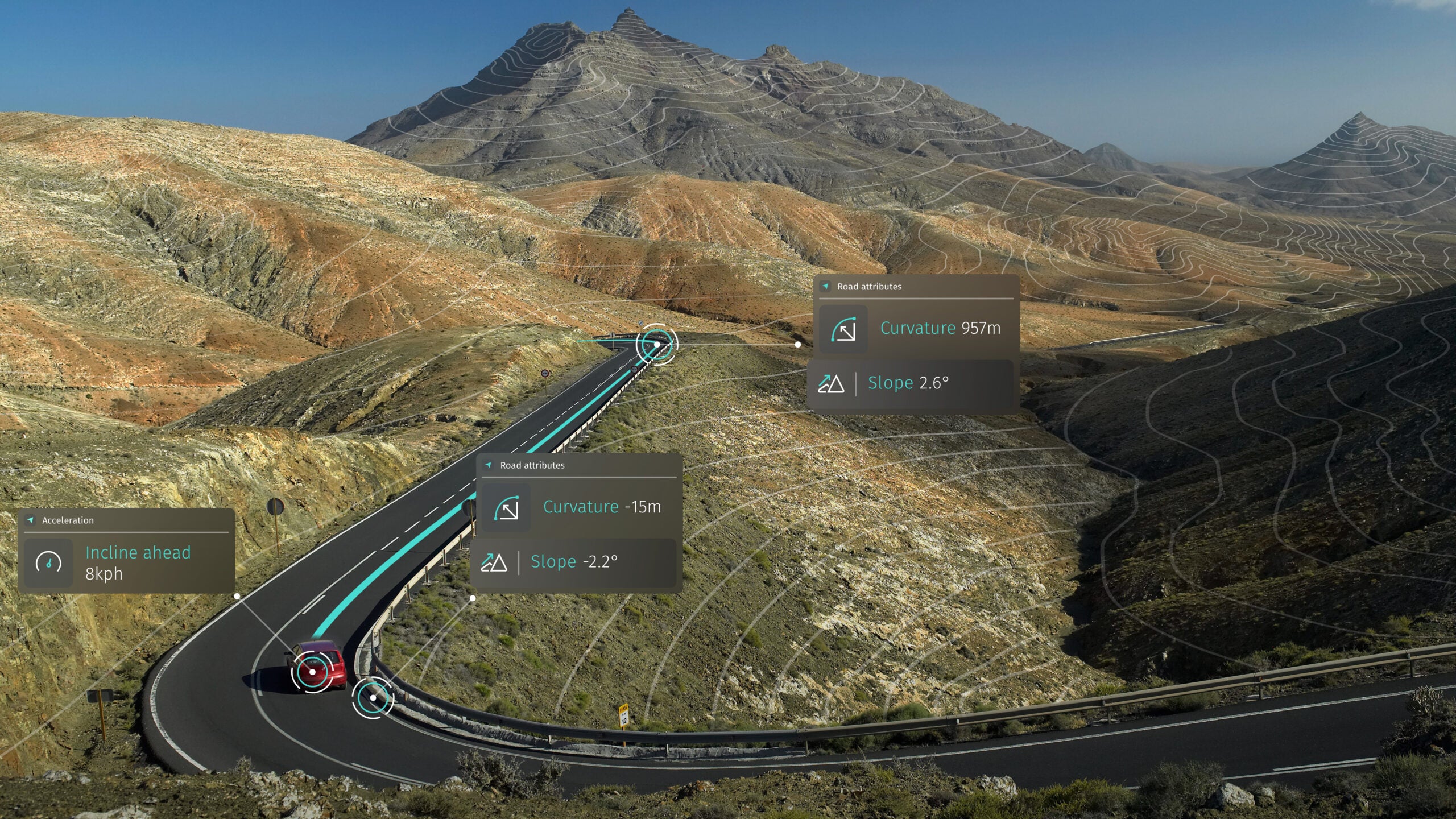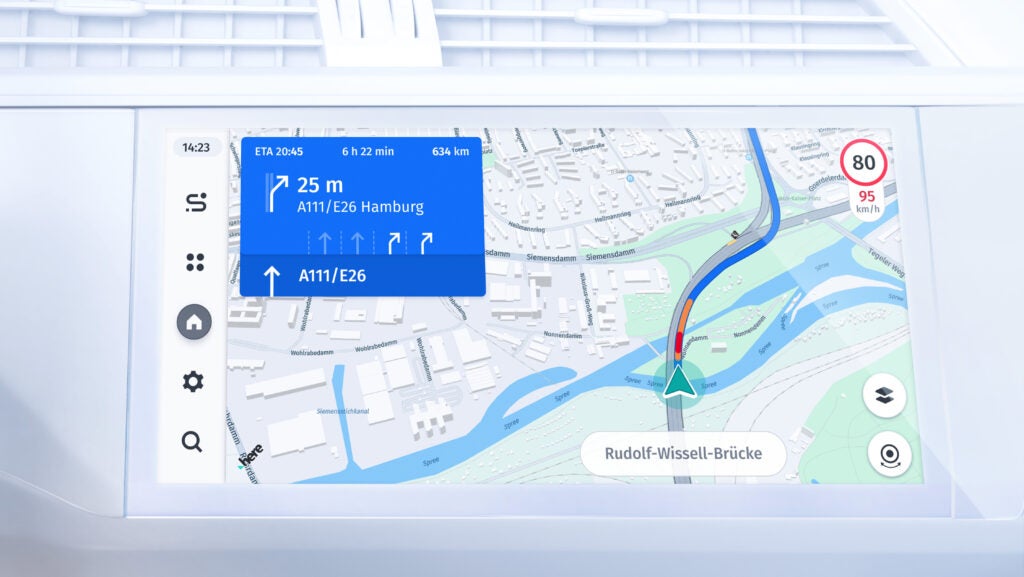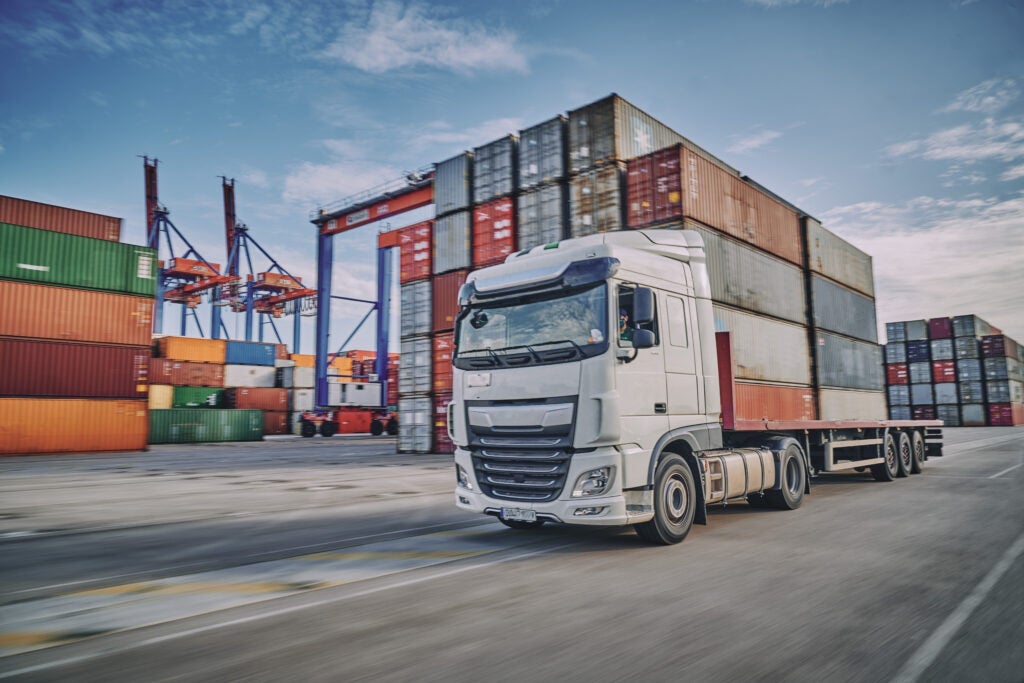
The increasing use of location data in the automotive, transport and logistics industries allows company assets to be viewed in a detailed, accurate and comprehensive manner – allowing real-time visibility, and for companies to efficiently manage their connections.
American-Dutch multinational group, HERE Technologies specialises in this area of the industry providing mapping, location data and related services to a range of companies. The company’s vice president of product management, Remco Timmer, recently spoke at the Gartner Supply Chain Symposium to discuss the companies increasing map making capabilities and services.
We caught up with Remco Timmer at the HERE Technologies office in London to learn how the company’s technology can assist fleet managers as well as the EV market.

Just Auto (JA): Could you discuss your role and responsibilities at the company?
Remco Timmer (RT): My title is vice president of product management, HERE Technologies. I’m part of our product and technology team, reporting to our product and technology officer, I responsible for many things, but amongst others portfolio management and portfolio strategy. I run the design team of HERE as well, which is a side job. I am also responsible for one of the HERE applications called ‘Here we go’.
My day starts early with calls with our Asian customers. Typically that will be the first thing I will do. I’m also trying to join stand-ups with the team – they are the development teams that have daily stand-ups; once in a while I join these just get an idea on what’s going on, what their concerns are, where I can help.
I am involved also with making portfolio management strategy decisions, reviewing options that we have, evaluating the effect of the strategy so far for most products. Then, typically, I’d like to spend a lot of my time with customers to see what’s going on in many industries that we serve. We serve transport, logistics, supply chain, automotive, but also big tech in its widest sense. I really enjoy it.
How well do you really know your competitors?
Access the most comprehensive Company Profiles on the market, powered by GlobalData. Save hours of research. Gain competitive edge.

Thank you!
Your download email will arrive shortly
Not ready to buy yet? Download a free sample
We are confident about the unique quality of our Company Profiles. However, we want you to make the most beneficial decision for your business, so we offer a free sample that you can download by submitting the below form
By GlobalDataYou recently spoke at the Gartner Supply Chain Symposium. During your talk what was discussed?
During my talk I was explaining the relevancy of location intelligence. For the supply chain industry we explained that location intelligence can help improve estimated time of arrival (ETA). Of course we can do so much more, but we tried to narrow it down to one key concern for the supply chain industry.
Estimated time of arrival is critical in managing expectations with customers. If you know when your parcel or load is going to arrive that’s very important to a customer – it needs to be really reliable. We spoke about how having an accurate representation of reality, which is what we do with the map making part of our business, and how insights in how your fleet operates can actually help to improve ETA accuracy.
I also spoke about how our map making capabilities are advancing on the back of all kinds of new technology. We’ve been doing this for 35 years and made the first digital map 35 years ago, but as time and technology matures, this is a super-exciting time for map making. We have access to so much more spatial data that we can use to build much better maps every day.

What we also like to say is that it’s not just about having that accurate global map, but it’s also about bringing your own perspective onto that map. It could be an area that is uniquely yours, like a yard, a distribution centre, or a big indoor warehouse that you’d like to connect to that worldview that we offer and enable things like search, routing, rendering and navigation.
In the talk we also showed five examples of how we can help you by analysing fleet data to gain further insights in how your fleet operates, and then use that again for your operational efficiency with ETAs and other kinds of optimisation.
What are some of the key benefits of introducing this technology to the automotive industry?
It’s interesting to look across the entire lifecycle of a vehicle, from the research and development phase, sales phase, the production of vehicles, the usage of the vehicle. I think in a way location intelligence can play a part in all those areas of vehicle lifecycle. One example: I can see that currently our understanding of the world can really inform in R&D when looking at the autonomous features of cars; that’s one way we’re contributing to the R&D.
When you are in a car you don’t need navigation all the time, only when you are finding a new destination that you’re not aware of, or you’re unsure about routes – that’s when you will be using the navigation features. I think it’s more important to help drivers to be informed about the context in which the vehicle operates, and to present information that helps with things like safety. Things like speed limits, driving events, all those kinds of things, but equally just be inspired with options.
There are increasingly lots of services to consume on the go and that’s very exciting; it can add a lot of comfort to people. We are looking into how to present those options to drivers in an unobtrusive but inspiring way.
“This is an opportunity for the whole industry.”
Location intelligence also enables cars and systems to collaborate with each other more effectively. I think it is no longer just about optimising the node and make that ever more efficient, but it’s also about trying to optimise the entire system. As the world moves to more complex systems, then orchestration is key, and I think maps or digital maps and real-time map content offer a means to orchestrate all of that.
If you are location aware I think you’re smarter than anybody else on the road. You could have foresight on where traffic emerges around you so you can have your own understanding of your environment. You can also navigate smarter and in a more enjoyable way. We can help you move safer and smarter through environments with this kind of knowledge.
This is an opportunity for the whole industry.
Having access to this additional map data must also be beneficial to the EV market when locating charging stations?
Absolutely yes; our EV charge catalogues are very popular at the moment. We have one of the best global coverages of that. It’s one of the investment areas that we’re looking at to have an understanding of all EV charge points, and also EV optimised routing.
EV vehicles are very different from a traditional vehicle. You need to accommodate for these kinds of changes; for example, road inclines matter more for electric vehicles with regenerative braking. We’ve optimised our routing logic for that, but it’s also about creating an experience that is then easy to comprehend for people and not overwhelming. Making sure you don’t present them with too many choices, but offer real support.
It’s not just about where things are, but also what is the status of these things at any given time. EV charging points are one of those examples of content that is equally dynamic. With our technology we know live capability of charge points, the status of charge points, which mobility service providers operate them. It’s about more than just knowing where they are, it’s the status and capability or relevancy for the drivers that also counts.
How can technology such as this assist fleet managers with the challenges that they are facing?
The supply chain is facing shortages everywhere – staff shortages especially – but demand hasn’t reduced. Fleet managers need to try to optimise the efficiency of assets and ensure their deployment effectively. What’s critical is that they try to optimise supply and demand in real-time more than ever.
Our whole technology stack is about creating the visibility on where your fleet currently operates, how effective it is, stock times, what kind of driver profiles lead to different types of success. It’s also about if you know what you need to serve, trying to optimise the way you serve that. It’s not just about simple point-to-point routing, but it’s about complex route planning, being able to distribute all the tasks for all the fleet into vehicles with the right capabilities as effectively as possible.
They also need to be able to do that in real-time under changing conditions, traffic and weather conditions, successful or unsuccessful loads and these kinds of things. It’s a very dynamic situation.
I think we also have a role to play in helping roll out 5G and that’s something that we’re quite interested in. 5G is also a bit of a label; it starts to only become really advanced when it’s about millimetre wave spectrum 5G, so really high bandwidth and low latency. This requires a whole different kind of deployment, of the antennas and infrastructure. I think this is where our 3D content and our 3D understanding of the world can be really beneficial for mobile network operators.
We’re exploring new use cases for this low latency, high bandwidth tech, and they’re all centred around collaboration between vehicles – something which is critical in the supply chain and logistics industry.
Let’s say 5G is rolled out and the millimetre wave spectrum is available throughout the world. It enables massive processing of real-time data. This also contains all kinds of new spatial data, and I think this can be a next wave of optimisation in supply chain and logistics.

What more do you feel that companies could/should be doing to address the ongoing supply chain issues?
It starts with understanding where things are, how they’re being utilised. I think transparency could be obtained faster and that’s the first thing that they need to do: guess less and be the in the know more.
I think the automotive industry needs to become even more resilient, and to have more flexibility in purchasing. There are some nearshoring activities happening in EU and North America, which I think will all help to get the industry less dependent on a single global operating mechanism. That’s not a short-term solution, that’s a long-term solution.
They can’t just rely on a check-in and check-out linear supply chain – it needs to be more of a network that is continuously optimising. We, of course, believe that maps can help create that enhanced transparency.
What are your upcoming goals for the company?
We’ve been advancing the mapmaking capability and there are a couple of exciting new capabilities that we’d like to have live and impact all the products that we deliver before the end of the year. Not just for our own product, but also for our customers to benefit from. We build location intelligence, but we want our customers to build location intelligence with similar capabilities.
I’m looking forward to opening that up and to see how creative they get at using it; they are doing things that are really interesting and portray their own business projects. We sometimes believe that we have the most accurate map of the world – but it’s not always about accuracy, it’s also about your interpretation of reality.
Seeing how customers are using our base map, but then extend and customise further, using our location services and customising the business logic on top of that – it is exciting. We are creating more options for this.
We are also trying to make this ever more about self-service, offering very simple tools to help facilitate this. That’s what I’m really excited about, to take what we have built ourselves to advance and bring our product into the next generation, and opening it up for customers themselves to be creative with.
What is interesting in automotive is that they are redefining themselves. It’s not just about moving towards EVs, but it’s also what is the role of car in mobility at large and also what’s the role of automotive OEM in serving users with mobility. This is about, for example, being able to sell services through the car to the user, or through the mobile experience to the user. What is a mobility brand? What is a car brand? How can location intelligence actually support all of that?
So there are exciting conversations with customers focusing on what’s the new role of mobility OEM, and how can they serve the audience better with a with a flexible variety of mobility and all kinds of other location based services?
See also: Stress free route planning with HERE Technologies







